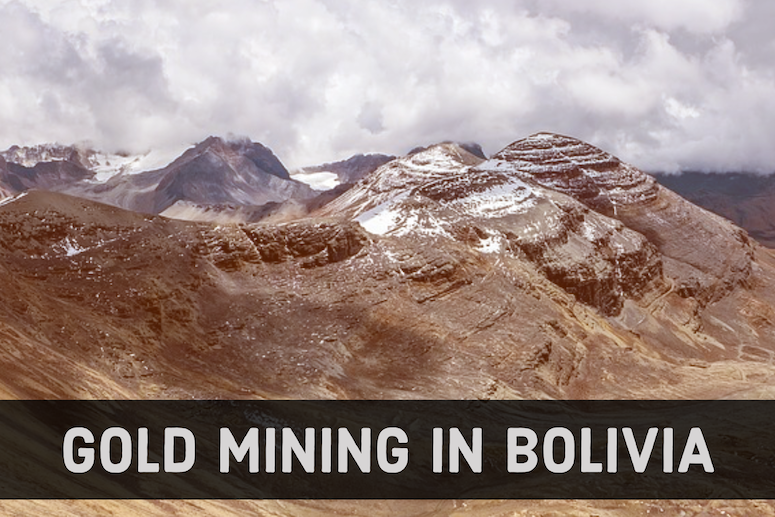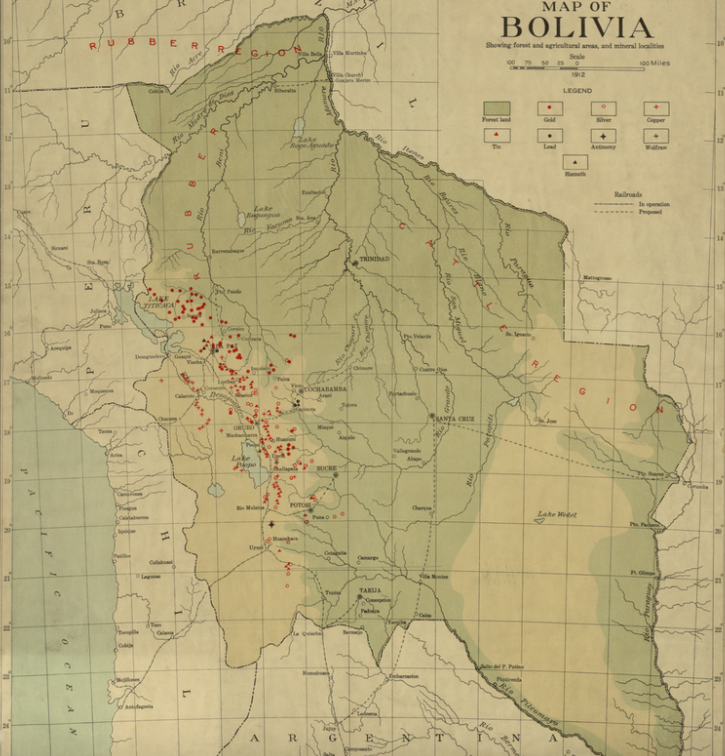
Bolivia is now far from the main stage of the global economy, but the case was quite different centuries ago. In the 1500s, this land-locked country played a vital role in establishing the Spanish Empire. For a long period, Bolivia also dominated the global economy through the mining of precious metals.
Bolivia is rich in mineral deposits like many other countries in South America. By the mid-twentieth century, tin and other minerals surpassed silver and became the country’s main source of wealth. The people who dominated the mining industry in Bolivia also controlled national politics.
Following the start of the labor movement and the 1952 revolution the dominance of the mining barons ended. Along with it, the mining industry also witnessed a slow and steady decline.
Saving Bolivia’s Economy: Gold to the Rescue?
A combination of reasons can be attributed to the decline of the mining industry. After the nationalization of mining operations, the government tried several policy changes that didn’t work. The overall result of failed policies and the crash of the international tin market led to the layoff of mining workers in the mid-1980s.
In 1985, the mining industry was a pale shadow of its glorious past. The mining sector only accommodated 2% of the workforce, made up only 2.5% of the government revenue, and accounted for just 4% of the country’s GDP.
During Bolivia’s worst crisis, the precious metal – Gold – came to the country’s rescue. Within three years the mining sector recovered, largely due to a sudden increase in gold production. The phenomenal surge in gold excavation also helped the recovery and expansion of other mineral and metal sectors.
“Speaking of gold excavation, for the past decades it has not the big mining corporations, but small cooperatives and individual gold prospectors who are at the core of gold mining in the country. In Bolivia, the new gold rush started in the early 1980s. People from all walks of life descended on the waterways such as the Mapiri River to find gold.”
Since the 80s, there have been many ups and downs in the political landscape, including the re-nationalization of the mining industry. But, the mining of gold and other resources has remained steady. In certain sectors, the industry has even recorded impressive growth.
The key reasons for the industry’s growth and general optimism are the involvement of the foreign players and the effective running of the mining cooperatives. Despite nationalization, gold and mineral mining in Bolivia is mainly controlled by foreign companies. In addition, the mining cooperatives give employment to the vast majority of the people in Bolivia.

Historic map showing mineral mines in Bolivia. Red dots indicate gold, silver, copper and tin mines. 1912.
Gold Mining: The Future of Bolivia
Bolivia is yet again on the cusp of another gold rush. Like the previous occasion, the latest boom in gold mining started after a crisis. After the 2008 global economic crisis, the prices of gold shot up and put gold-rich Bolivia and other South American countries in the spotlight.
Speaking of gold excavation, for the past decades it has not the big mining corporations, but small cooperatives and individual gold prospectors who are at the core of gold mining in the country. In Bolivia, the new gold rush started in the early 1980s. People from all walks of life descended on the waterways such as the Mapiri River to find gold.
With the country in financial crisis and very few jobs for the taking, gold prospectors and cooperatives were heavily involved in the gold excavation. At that time, the gold they found made up the bulk of the country’s exports. By the end of 1988, exports reached 5 tons, which is a sharp increase from 1 ton which was reported in 1985.
Much of the export at that time was contraband gold. The government decided to use the locally mined gold to boost up its reserves. So, it announced a policy that promised an extra 5% over the actual gold price on sales made to the Central Bank of Bolivia. Soon, as predicted, gold replaced tin as Bolivia’s major source of income.
Additional Reading:
Gold Prospecting and Mining
The land-locked country has challenging geological characteristics, but it’s also blessed with many freshwater sources. Western Bolivia is a mountainous region with the Andes running north-to-south through the country. This harsh mountainous terrain dotted with numerous volcanoes is also home to copious reserves of gold and other metals and minerals.
Large deposits of the precious metal were found in a region to the north of La Paz and east of Lake Titcaca. Here the government allotted a vast area – around 21,000 hectors – for the cooperatives for gold mining. In addition, more than 10,000 prospectors congregate in the region to mine gold.
The richest mining regions included Mapiri, Guanay, Teoponte, Huayti, and Tipuani. In addition, the cooperatives requested for allotment of more land for prospecting. The government later supplied an additional 53,000 hectors for this purpose.
Gold panning and mining activities are carried out by local residents and artisanal miners in several villages in Bolivia. Many people in the villages near the border make their living panning for gold.
Next: Huge Gold Mines in Brazil’s Jungle
